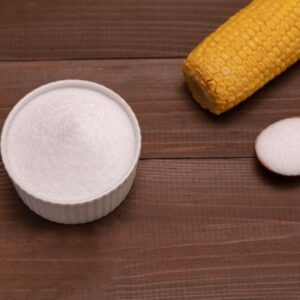
Unusual Cause of Crohn’s Disease Discovered
Dear Living Well Daily Reader,
Diarrhea, fatigue, fever, mouth sores, weight loss, abdominal pain and bloody stools.
If you have any combination of these symptoms, you may be one of the 700,000 Americans suffering from Crohn’s disease.
Scientists have long thought this painful and disruptive disorder is caused by many factors, including your genetics, environment and diet.
But just a few weeks ago, scientists from the Case Western Reserve University School of Medicine, in Cleveland, Ohio, made a groundbreaking discovery that reveals there is another factor contributing to your risk of developing Crohn’s disease — the tiny microorganisms living in your guts.
Plus, when they took a closer look, they realized that not only were bacteria responsible for this uncomfortable condition, but so was another microorganism — yeast.
![]() The Three Amigos of Indigestion
The Three Amigos of Indigestion
Patients with Crohn’s experience abnormal immune responses to common bacteria. If fact, these bacteria are so common they are in everyone’s intestines.
And while the researchers already knew that these bacteria play a major role in causing Crohn’s and other inflammatory bowel disorders, they didn’t realize that yeast, which is a type of fungus, is also a contributing factor to the disease.
By analyzing fecal samples of both folks who had Crohn’s and those who were Crohn’s-free, they realized that the presence of one specific fungus and two different bacteria may trigger immune responses in Crohn’s patients.
The bacteria, Serratia marcescens and E. coli, and the yeast Candida tropicalis were found at higher levels in those suffering from Crohn’s than in healthy patients. Plus, those with Crohn’s also experienced lower levels of good gut bacteria, which could take a toll on digestive health.
Researchers believe that all three of these microorganisms work together to create a film-like substance called biofilm. This living film can attach itself to your intestines and cause inflammation, diarrhea, constipation, fatigue and other Crohn’s symptoms.
These groundbreaking findings could lead to revolutionary new treatments for Crohn’s sufferers, including the use of probiotics. These could increase levels of beneficial bacteria and fungi while reducing the levels of Crohn’s-causing microorganisms.
The overgrowth of Candida yeasts have been linked to other health issues including chronic fatigue, fungal infections of the nails, gas, bloating, constipation, allergies, sugar cravings and leaky gut syndrome. So it’s not shocking to hear one of the members of this family could be partially responsible for a chronic digestive disorder.
Fortunately, there are a few simply dietary changes you can make to halt the growth of Candida yeasts.
These fungi feed on alcohol, sugar and refined carbs, so it’s best to avoid foods made with wheat and sugar and skip your evening cocktail as often as possible.
In addition, adding a few servings of fermented veggies like kimchi or sauerkraut to your diet is a good way to boost your good gut flora and bring your body back to balance. Start with just half a cup a day to get your body started in the battle against Candida.
Live well,

Natalie Moore
Managing editor, Living Well Daily
Sources
[1] Crohn’s disease
[2] 9 Candida Symptoms & 3 Steps to Treat Them
[3] Crohn’s Disease by the Numbers: Facts, Statistics, and You
[4] Effects of Fresh Garlic Extract on Candida albicans Biofilms
Written By Natalie Moore
Natalie Moore is a dedicated health researcher with a passion for finding healthy, natural, and science-based solutions. After a decade of direct healthcare experience in western and natural medicine, she was involved in public health research before joining Living Well Daily.
View More Free Articles
This Sleep Mistake Is Doubling Your Disease Risk
Think your inconsistent bedtime is just a harmless habit? Think again. New research reveals that going to bed at different times each night isn’t just making you tired—it could be dramatically increasing your risk of serious diseases. But the key to making sure poor sleep doesn’t derail your health goals likely isn’t what you think…....
Stop Obsessing Over Diet Trends
Can we stop with the endless diet debates already? Every other week there’s a new headline shouting about which diet is best for weight loss, heart health, or diabetes. Paleo, keto, low-carb, high-protein… it’s exhausting. And now, a new meta-analysis is out comparing the Mediterranean diet, the DASH diet, and something called AHEI (that’s “Alternative...
A New Reason to Ditch Processed Junk
If you’ve ever walked the inside aisles of your local grocery store and thought, “This is all just junk,” your instincts were spot on. A new study published in the journal Thorax just added another red flag to the list of dangers linked to ultra-processed food—a 41 percent higher risk of lung cancer. That’s right....
When Being Winded on Stairs Is Serious (And When It Isn’t)
I had an athlete visit me recently because he experienced shortness of breath while climbing stairs. He is in great shape, so he was worried about what it might mean. “Doc,” he said, “I run five miles three times a week. Why am I huffing and puffing after two flights of stairs?” His concern is...
Study EXPOSES Hidden Danger Lurking in Your Car
We think of our homes and cars as safe havens. But according to a startling new study, they may be flooding your lungs with microscopic plastic particles—every single day. Researchers in France recently found that adults inhale an average of 68,000 microplastic particles daily from indoor air alone. To put that in perspective, that’s about...
Mailbag: Is Modern Food Making You Snore?
“What can cause snoring, and is there a way to correct this issue?” —Seeking Silence Hi Seeking, Snoring happens when the soft tissues in your throat relax and vibrate as air passes through during sleep. While several factors can cause snoring—from sleep position to nasal congestion—I want to share one trigger that might surprise you....
Simple Food Swap SLASHES Dementia Risk 28%
Let’s be honest… who would jump at the chance to cut their dementia risk by 28 percent. And no, you don’t need to run marathons, survive on broccoli, or learn to play the zither (whatever that is) to make it happen. All it takes is one easy swap—something that’s probably already in your refrigerator. Researchers...
This SMART Floss Exposes Hidden Health Danger
Scientists have created dental floss that doesn’t just clean between your teeth—it also tracks your stress while you’re flossing. Now, I know what you’re thinking… “Great—now even flossing is going to stress me out by telling me how stressed I am.” But this fascinating new tool from Tufts University could be a game-changer for understanding...
Is This "Safe" Sweetener Damaging Your Brain?
The headlines are alarming… “Popular Sugar Substitute Linked to Brain Cell Damage” and “Erythritol Could Damage Critical Brain Barrier” are just two of the dozens I’ve spotted recently. But before you toss every sugar-free product in your pantry, let’s take a closer look at what this study actually shows—and what it doesn’t. The latest research...
This Summer Threat Could SPIKE Your Blood Sugar
Picture this… It’s another scorching hot summer day. You crank up the air conditioning while watching the weather forecast, which predicts yet another “record-breaking” heat wave. It’s starting to feel like just another miserably uncomfortable summer. But what you might not realize is that—if you have diabetes—those rising temps could do far more damage to...









